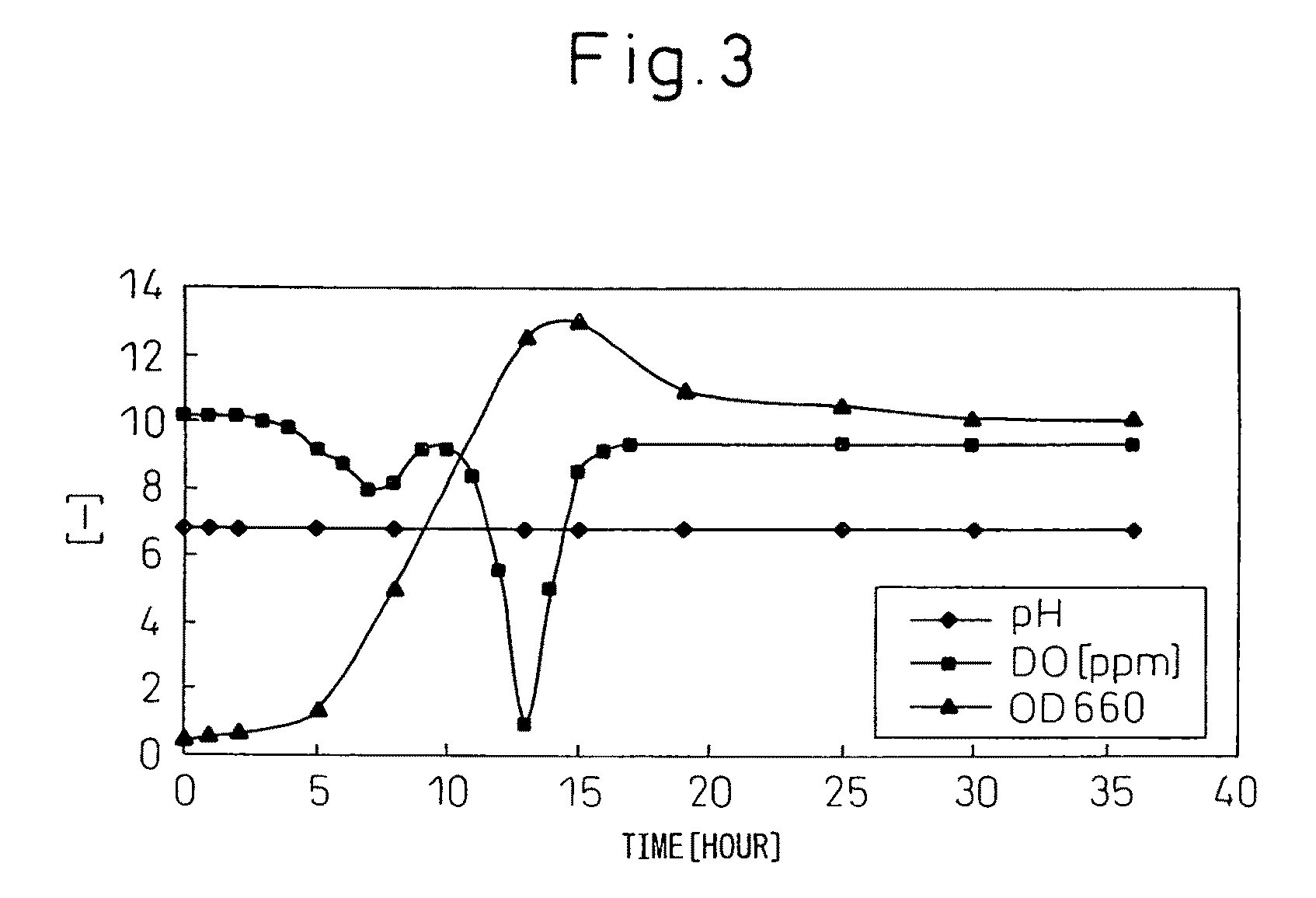Plasmid, transformants and process for production of 3- carboxymuconolactone
a technology of plasmids and transformants, which is applied in the field of plasmids, transformants and process for the production of 3 carboxymuconolactone, can solve the problems of ineffective use of no effective technology for their use, and no method known for large amounts of low molecular aromatic substances, etc., to achieve high yield and inexpensive fermentation production
- Summary
- Abstract
- Description
- Claims
- Application Information
AI Technical Summary
Benefits of technology
Problems solved by technology
Method used
Image
Examples
example 1
Construction of Recombinant Plasmid pKTVDHG
(1) Construction of Recombinant Plasmid pKTVLABC
[0035]Recombinant plasmid pKTVLABC was constructed by the method described in Japanese Unexamined Patent Publication (kokai) No. 2005-278549.
(2) Construction of Recombinant Plasmid pULV
[0036]Recombinant plasmid pULV was constructed by the method described in Japanese Unexamined Patent Publication (kokai) No. 2005-278549.
(3) Construction of Recombinant Plasmid pBluescriptII SK− / pcaHG
[0037]Using the universal primer: 5′-GGTGTCAGGCAAAGGTGTTAAGAC-3′ (SEQ ID NO: 5) and reverse primer: 5′-AGTGGGGTTCTGCTGGTTCGGC-3′ (SEQ ID NO: 6) as PCR primers, pcaHG was amplified from the genome of strain KT2440 and linked to a DNA fragment obtained by cleaving pBluescriptII SK with XbaI, so that it was in-frame with Lac.
(4) Construction of Recombinant Plasmid pULVHG
[0038]A DNA fragment of a plasmid containing the LacZ promoter region, obtained by cutting of the recombinant plasmid pBluescriptII SK− / pcaHG with rest...
example 2
Production of 3-Carboxymuconolactone from Vanillin
(1) Conversion from Vanillin to 3-carboxy-cis,cis-muconic Acid
[0040](1-1) Recombinant plasmid pKTVDHG constructed in Example 1 was used to transform E. coli HB101, and the transformants were shake cultured at 37° C. for 18 hours in LB medium (100 ml) containing 25 mg / L ampicillin, after which the recombinant plasmid pKTVDHG was extracted from the proliferated cultured cells.
(1-2) Pseudomonas putida PpY1100, a microorganism that has lost the catabolic enzyme function from plant-derived, chemically synthesized or petroleum-derived vanillin, syringaldehyde, vanillic acid, syringic acid, protocatechuic acid, p-hydroxybenzaldehyde or p-hydroxybenzoic acid to 2-pyrone-4,6-dicarboxylic acid, as well as catabolic enzyme function for 3-carboxymuconolactone, 3-carboxy-cis,cis-muconic acid, was cultured in 500 ml of LB liquid medium at 28° C. for 23 hours, and then cooled in ice for 30 minutes. The cells were collected by 10,000 rpm centrifugat...
example 3
Production of 3-Carboxymuconolactone from Vanillic Acid
[0046]Following the same procedure as in Example 2, except for using vanillic acid as the substrate, 3-carboxymuconolactone was obtained at a yield of about 88.5% in terms of the ratio of added substrate.
PUM
| Property | Measurement | Unit |
|---|---|---|
| pH | aaaaa | aaaaa |
| pH | aaaaa | aaaaa |
| volume | aaaaa | aaaaa |
Abstract
Description
Claims
Application Information
 Login to View More
Login to View More - R&D
- Intellectual Property
- Life Sciences
- Materials
- Tech Scout
- Unparalleled Data Quality
- Higher Quality Content
- 60% Fewer Hallucinations
Browse by: Latest US Patents, China's latest patents, Technical Efficacy Thesaurus, Application Domain, Technology Topic, Popular Technical Reports.
© 2025 PatSnap. All rights reserved.Legal|Privacy policy|Modern Slavery Act Transparency Statement|Sitemap|About US| Contact US: help@patsnap.com



